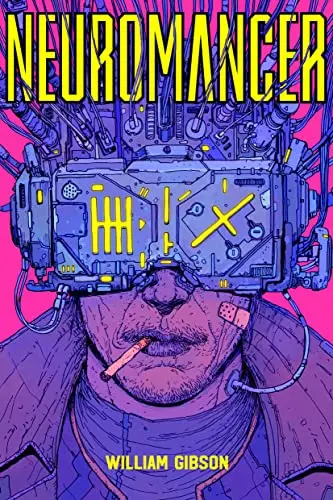
Neuromancer was written by William Gibson and published in 1984. groundbreaking science fiction novel that left an indelible mark on the indelible mark on the cyberpunk genre. This gripping captivating book transports us to a dystopian future where technology where technology, artificial intelligence and cybernetics create an unforgettable futuristic universe.
Neuromancer is often regarded as the founding text founding text of the cyberpunk genre. It established many of the conventions of the genre, including the exploration of virtual worlds dependence on technology and a bleak vision of the future. of the future. The novel has had a lasting impact on science fiction fiction and popular culture, inspiring works of film literary and artistic works over the decades. decades.
The protagonist, Case, is a talented but fallen hacker hacker who has lost his ability to connect to 'cyberspace "cyberspace', the book's equivalent of the World Wide Web. His quest to regain his access to cyberspace takes him into a dangerous world where the boundaries between reality and the virtual. Case embodies the typical cyberpunk anti-hero cyberpunk anti-hero, a complex character with ambiguous motivations.

William Gibson introduced the concept of cyberspace in Neuromancer a term that has become commonplace in popular culture. Cyberspace is a global network of interconnected computers, a virtual reality where hackers can hackers can explore and manipulate information. This concept prefigured the advent of the Internet and virtual worlds virtual worlds such as Second Life and VR.
Gibson's writing is complex and immersive, creating a dense, poetic atmosphere dense, poetic atmosphere that perfectly evokes the cyberpunk atmosphere. His innovative use of technological jargon and his exploration of themes such as dehumanisation dehumanisation, surveillance and alienation have helped to define the genre.
Although published in 1984, Neuromancer remains strikingly strikingly relevant to our times. The exploration of addiction to technology, cybercrime and artificial artificial intelligence echoes current concerns about our our relationship with technology.